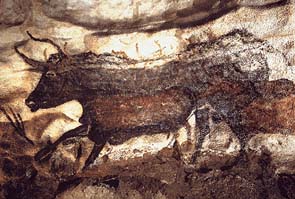Francis D. Klingender on:
[Wikipedia]
[Google]
[Amazon]
 Francis Donald Klingender (1907
Francis Donald Klingender (1907
/nowiki> D nald
Archived here.
/ref> – 9 July 1955"Editors' Foreword and Acknowledgments" in ''Animals in Art and Thought to the End of the Middle Ages''. Edited by Evelyn Antal and John Harthan. London: Routledge and Kegan Paul, 1971, pp. xxiii-xxiv. ) was a Marxist
 Francis Donald Klingender (1907
Francis Donald Klingender (1907/nowiki> D nald
Archived here.
/ref> – 9 July 1955"Editors' Foreword and Acknowledgments" in ''Animals in Art and Thought to the End of the Middle Ages''. Edited by Evelyn Antal and John Harthan. London: Routledge and Kegan Paul, 1971, pp. xxiii-xxiv. ) was a Marxist
art historian
Art history is the study of aesthetic objects and visual expression in historical and stylistic context. Traditionally, the discipline of art history emphasized painting, drawing, sculpture, architecture, ceramics and decorative arts; yet today ...
and exponent of Kunstsoziologie
The sociology of art is a subfield of sociology that explores the societal dimensions of art and aesthetics.
Studying the sociology of art throughout history is the study of the social history of art, how various societies contributed to the app ...
whose uncompromising views meant that he never quite fitted into the British art history establishment.
Klingender was born in Goslar, Germany, to British parents. At the start of the first World War, his father, Louis Henry Weston Klingender (1861-1950), was interned near Berlin on suspicion of spying for the British. The family moved back to England in the 1920s and Klingender supported them while attending night classes at the London School of Economics. He subsequently embarked on an academic career in sociology, becoming a lecturer in that subject at the University of Hull, which position he retained until his death.
His ''magnum opus'' was ''Animals in Art and Thought to the End of the Middle Ages'', published posthumously, and edited by Evelyn Antal, wife of Frederick Antal, and John Harthan. Klingender inherited an interest in this subject from his father who had been a painter of animals, and he added to that his own sociological, Marxist and Freudian interpretations. His thesis was that as well as being the companions and servants of man, the depiction of animals in art was symbolic of the hidden or secret urges of society. He was encouraged in his work by Julian Huxley
Sir Julian Sorell Huxley (22 June 1887 – 14 February 1975) was an English evolutionary biologist, eugenicist, and internationalist. He was a proponent of natural selection, and a leading figure in the mid-twentieth century modern synthesis. ...
, whose suggestions were incorporated into the final work. Klingender had intended to complete the work up to the nineteenth century, and possibly later, however, on his death the manuscript was only substantially complete up to the end of the Middle Ages and the editors took the decision to publish only up to that point, hence the chosen title. Later periods were added as an Epilogue from the available notes.
Selected publications
* '' Money Behind the Screen. A report prepared on behalf of the Film Council by F. D. Klingender and Stuart Legg, etc.''. London: Film Council of Great Britain, Lawrence & Wishart, 1937. * ''Hogarth and English Caricature''. (Ed.) Transatlantic Arts, 1944. * ''Goya in the Democratic Tradition''. London; Sidgwick & Jackson, 1948. * ''Art and the Industrial Revolution''. Evelyn, Adams and Mackay, 1968. *''Animals in Art and Thought to the End of the Middle Ages''. Edited by Evelyn Antal and John Harthan. London: Routledge and Kegan Paul, 1971. * ''5 on Revolutionary Art. Essays by Herbert Read, F.D. Klingender, Eric Gill, A.L. Lloyd, Alick West''. Edited by B. Real.References
Further reading
*Pooke, Grant. ''Francis Klingender 1907-1955: A Marxist Art Historian Out of Time''. Gill Vista Marx Press, 2007. {{DEFAULTSORT:Klingender, Francis Donald 1907 births 1955 deaths Academics of the University of Hull Alumni of the London School of Economics British art historians 20th-century British historians